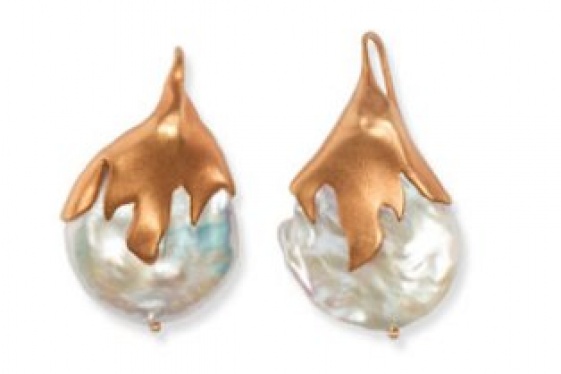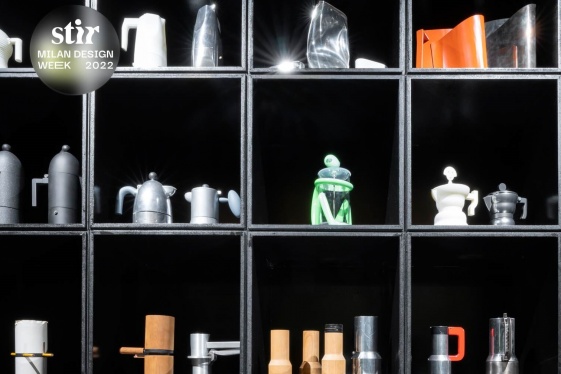

Italian Design spans the centuries, evolves in the spirit of the times and today also translates into innovative forms of cultural design. La Grande Brera is the project to expand Milan's Pinacoteca of the same name by restoring, adapting and fitting out the adjacent Palazzo Citterio as an exhibition space, where modern art collections can be housed.
Brera in the Thirteenth Century housed the Convent of the Humiliati, which was later transformed into the Jesuit College, which later became a symbol of Enlightenment ideals.
In 1773, the complex became public property, and in 1776, at the behest of Maria Theresa of Austria, it was converted into the Brera Academy.
The intent was to create a true cultural center for the promotion of the arts and sciences, including the Academy, the Istituto Lombardo di Scienze e Lettere, the Braidense National Library, the Astronomical Observatory and the Botanical Garden.
The initiative, relaunched in the 1970s by Franco Russoli, the historic director of the Pinacoteca, today finally reaches its completion, acquiring the dimension of a museum center with an international scope.
The setting up of Palazzo Citterio expands the spaces allocated to exhibition rooms, previously limited to those of the Pinacoteca, making available to the public works that previously could not be seen.
The rooms on the piano nobile will display masterpieces by Boccioni, Morandi, Modigliani and Carrà.
Prominent among the works on display will be the collection of Emilio and Maria Jesi, a husband and wife who lived in Palazzo Citterio and who, at the time of their donation to Brera, expressed the wish for the works to be exhibited there; a section will be devoted to the Vitali collection, rich in archaeological finds.
The exhibition will find a highlight in Pellizza da Volpedo's “Fiumana,” the preliminary study to “The Fourth Estate,” with its four-and-a-half-foot crowd of striking laborers advancing toward the viewer.
Great interest is also aroused by the opening of the so-called underground rooms, designed at Palazzo Citterio by James Stirling in the 1980s and left unfinished.
The planning of this new chapter in Brera's history takes its starting point from the Design of a new visual identity, embracing the Pinacoteca, Palazzo Citterio and the Braidense National Library, as well as the Brera Academy, the Astronomical Observatory, the Botanical Garden, the Istituto Lombardo Accademia di Scienze e Lettere, the Ricordi Archives and the Società Storica Lombarda.
The creation of the new logo and communication plan was entrusted to Quibit Group and Carmi e Ubertis, a branding company founded by Elio Carmi and Alessandro Ubertis in 1986.
The company has already successfully worked on major projects of a sociocultural nature, including Venaria Reale, the Louvre, MoMA and the Uffizi Galleries, winning the prestigious Compasso d'Oro Award of the ADI - Association for Industrial Design - for the latter intervention in 2020.
Going beyond the eyes taken from Diderot's Encyclopédie, characteristic of the well-known logo designed by Franco Maria Ricci, the new emblem centers on the image of an octagon in the color octanium.
The chosen color, octanium, represents a hue that encompasses and amalgamates the green of nature and the blue of the sky.
The shape of the octagon, clean and geometric, recalls both the architectural structure of the space and its symbolic meaning: order, grace and balance.
The double square echoes the floor of the courtyards of the two palaces, Brera and Citterio, reinforcing the relationship between the institutions in the complex.
The silhouette of the octagon is symbolically crossed by two corridors branching off from the central courtyard, representing the new brand's main axes and projecting it outward.
Alessandro Ubertis, who led the work, stressed the importance of visual identity, describing it as the cornerstone of any communication strategy.
The designer thus recounted, in clever words not without irony, the creative process that led him to define the aesthetic codes for Grande Brera. “I started with an analysis of the genius loci, the distinctive elements of the space. I discovered how much the spirit of Milan is born right here, and I understood the need to find a language that could contain and represent artistic products while offering a vision for the future. After all, as Woody Allen said, isn't the museum the ideal place to find a girlfriend?”
Angelo Crespi, director of the Pinacoteca di Brera and the beating heart of the project, said, “The octagon therefore represents not only the physical heart of the Pinacoteca, but also the artistic heart of Milan, a heart that today becomes larger. The two corridors that start from the central courtyard and extend beyond the physical boundaries of the complex are represented in the logo, becoming the axes that delimit the new brand but at the same time project it outward. An idea of growth and openness toward the future that represents Brera's willingness to embrace new perspectives and cultural horizons.”
The initiative is also characterized by an innovative form of partnership between Public and Private, Business and Museum: the “Pact for Brera.”
The project, in fact, includes the creation of a circle of patrons, committed in a personal capacity or representing a company, constituting the advisory board, called to meet to discuss, together with artists, curators and experts, projects and prospects for the development of the Great Brera and its cultural impact on the city of Milan.
Enlightening, again, are the words of Angelo Crespi: “The Pact for Brera implies a fundraising system that goes beyond the one usually practiced,” as it is “a Pact between public and private, within a medium to long term time horizon, that allows the management to enhance the city's artistic heritage and support major cultural events and extraordinary activities. The idea is a new advocacy of economic sustainability of state museums, which with autonomy, from 2014, can also welcome those who are not part of the institution, namely private individuals.”
You may be interested
-
Il Console Generale Usa: su turismo e seta s...
In mattinata ha incontrato il sindaco di Como, Mario Lucini, assieme all'assessore Gisella...
-
L'Arte del Gioiello Italiano - Lecture and T...
How has Italy influenced the world of Jewelry? Join us for a special lecture on the a...
-
Small and Medium Enterprises as the Italian...
by Claudia Astarita A recent study on 120 artisan SMEs of excellence – conducted...
-
The Italian Heritage Society of Indiana Lect...
Sunday, November 23 - 2 pmWhen: Sunday, November 23, 2014 2:00-4:00 pm Where: UL 1126 in t...
-
'Alessi 100-001' celebrates 100 years of Ales...
Iconic Italian design brand Alessi is celebrating its centennial with an exhibition titled...
-
'Autentico: design made in Puglia' pop-up exh...
‘Autentico. Design made in Puglia’ is located at 82 Gansevoort Street, New York, and be op...
-
'Ducale' by KREOO to Be Featured at Studium S...
NYC tile and surfaces showroom STUDIUM will be offering "Ducale" by KREOO (USA), a luxury...
-
'Freedom Fighters', i Kennedy e la lotta per...
John F. Kennedy, Robert F. Kennedy, Martin Luther King. Tre figure iconiche di quel moment...










